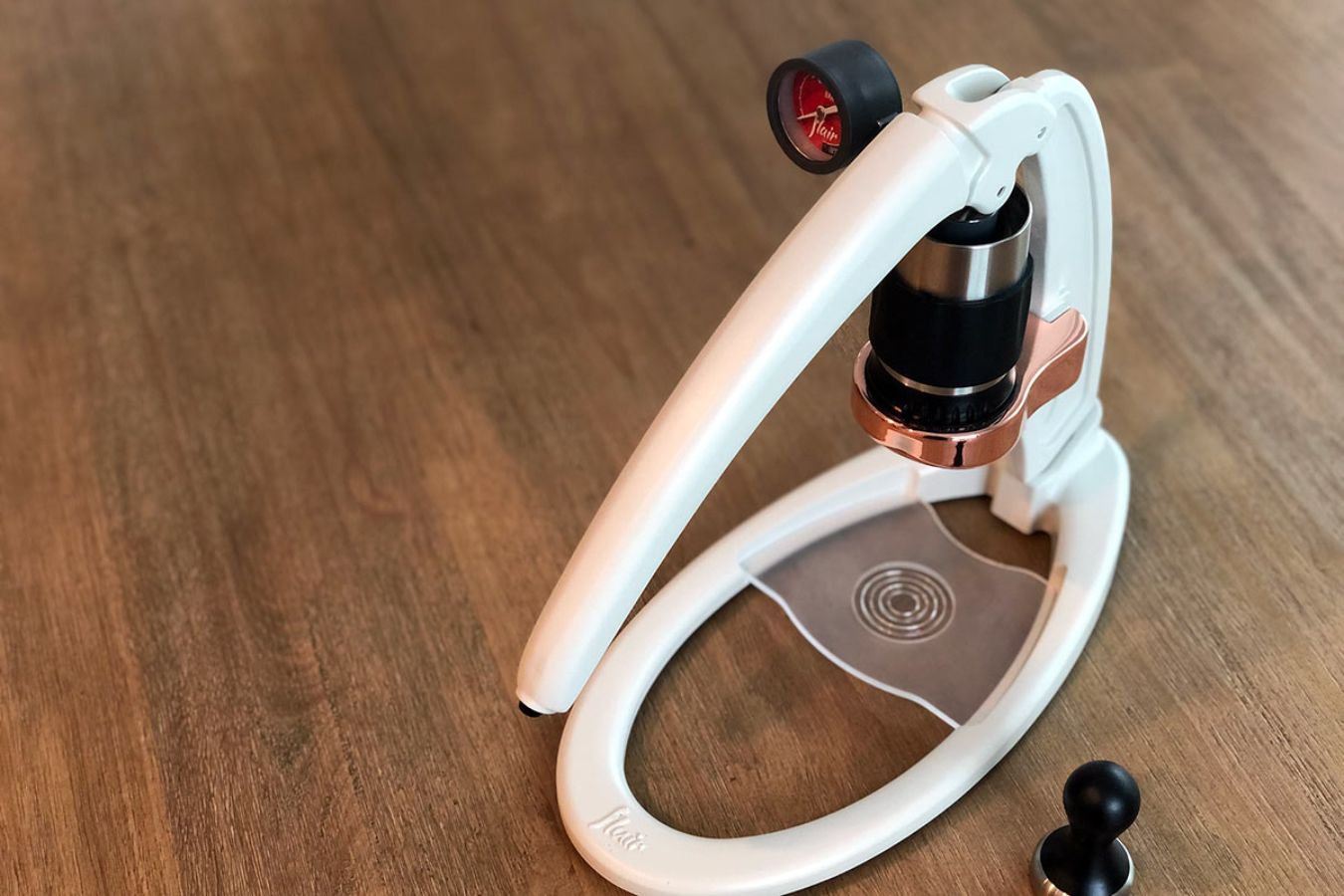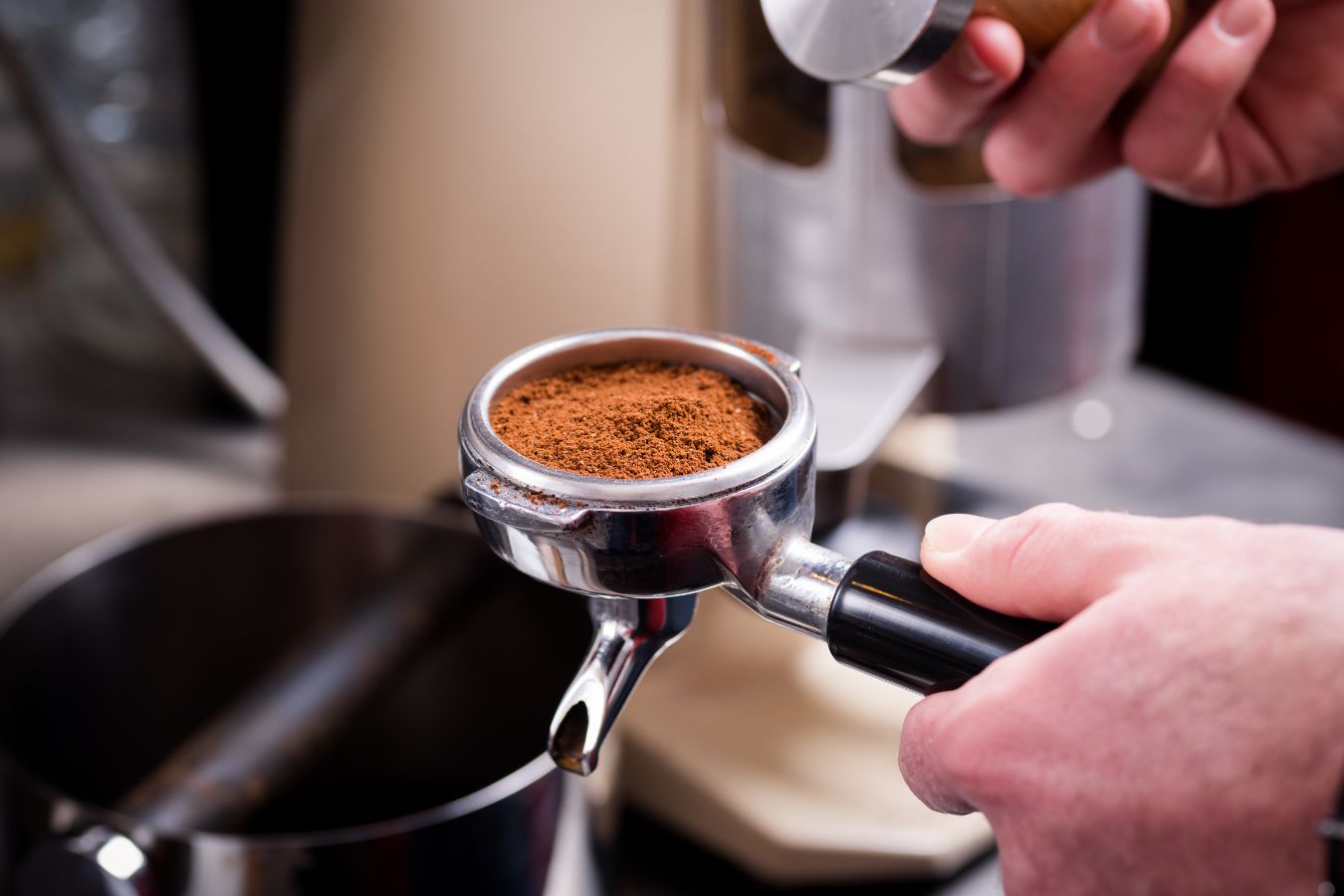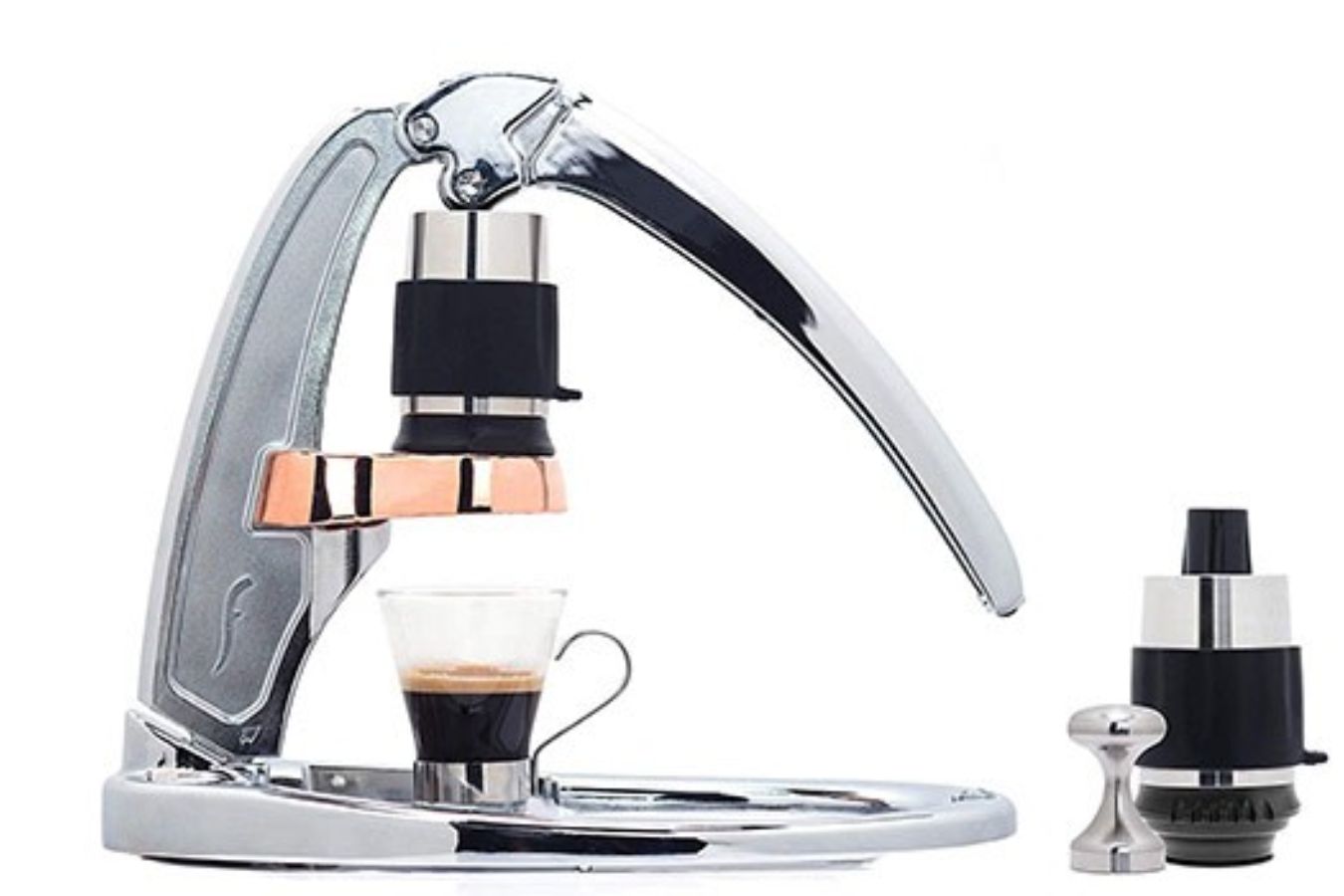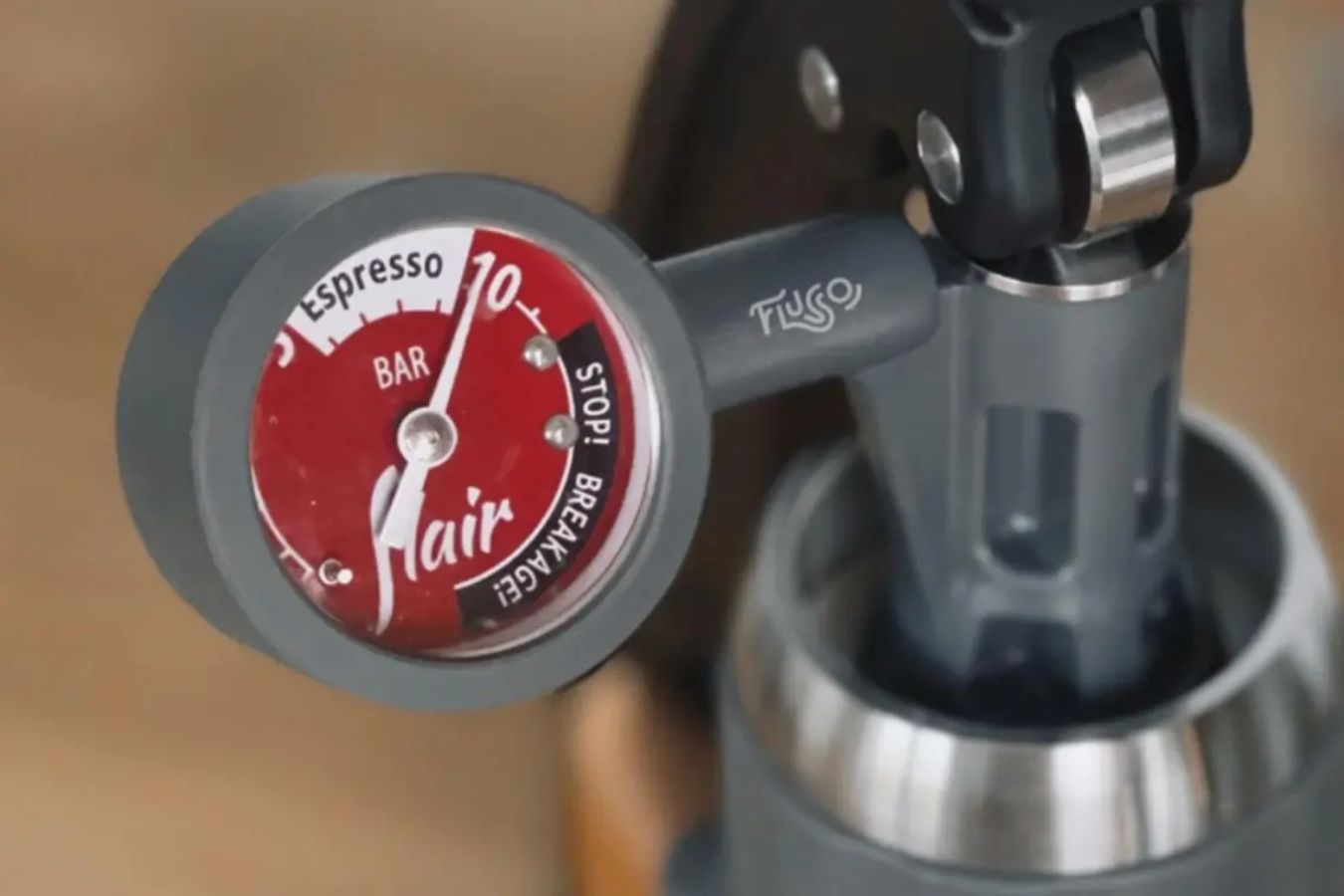
The majority of espresso makers on the market claim to be able to produce a standard and tasty espresso. However, it appears that they have failed to please true espresso fans, who are as demanding as the drink itself… Fortunately, when Flair debuted, it quickly established itself as a game-changer in the espresso machine market.
So, what’s the big deal about Flair? What sets Flair apart from other espresso machines? And how did Flair persuade the espresso-obsessed?
You’ll be able to respond to all of these questions in no time.
Let’s start with the definition and how to create a normal espresso to make sure we’re talking about the same espresso.
What Is Espresso And How Does It Work?
Espresso is a coffee preparation method in which hot water is forced under high pressure through extremely finely ground coffee powder. All of these components work together to extract the maximum amount of compounds from coffee powder. Then it’s on to making a coffee that’s exceptionally dense, with the coffee’s tastes pushed to the forefront.

To put it another way, espresso is a highly thorough and meticulous method of brewing coffee. As a result, making a cup of espresso necessitates extremely high standards for the elements involved in the extraction process.
There are numerous espresso machines on the market today, each with its own design, price, and operating mechanism. Many consumers who want to learn more before purchasing a product will undoubtedly be perplexed by these variances.
I’ve used and experimented with a variety of manual espresso machines throughout the years. Along the road, I’ve discovered that these espresso machines are lacking a few essential details. It’s the lack of pressure, the poor quality of the material, and the subtleties that don’t get to the root of the problem when producing espresso.
Pressure Generator Possible
To prepare a normal espresso, apply a minimum pressure of 6-9 bars to the water as it passes through the coffee. The coffee will be extracted quite forcefully at this pressure and will have a superb, thick, and powerful flavor.
Small hand pumps are used to drive the juice through the coffee in manual espresso machines. These hand pumps all have the same problem of creating pressure slowly, weakly, and in an exceedingly unsteady manner. A pale and thin flavor is associated with an espresso with such a poor and unsteady source of pressure.
As a result, a suitably powerful and stable pressure source is one of the most important aspects to consider when extracting espresso. Only then do we have the right to fantasize about a real espresso.
The Material Is Inadequate
Plastic is the most widely used material nowadays. Plastic is usually inexpensive and easy to come by in the raw materials industry. However, because plastic is easily deformed and has a low bearing capacity when subjected to pressure for an extended period of time, the structure would degrade.
The material will not fulfill the criteria for strength, durability, and safety in usage under regular espresso pressure (9 bar).
Because these manual espresso machines do not create a lot of pressure straight at once, the decision to utilize plastic is acceptable.
Detailed Information
One of the most important aspects of the espresso is that the coffee must be finely ground, and the water must be squeezed through a multi-hole filter. These elements work together to maximize extraction capacity, resulting in a coffee with a rich, robust flavor. Compared to other brewing methods, espresso allows for a clearer impression of coffee’s nuanced and different scents.

When ordinary pressures are insufficient to squeeze the water, these gadgets create pressure in a new way. Of course, the flavor of the resulting coffee changes as the nature of the extraction process changes.
To put it another way, in the proper method of extraction, pressure is established from the start with the goal of driving the water through the coffee in a single pass. The pressure is now created by restricting the water flow after re-extracting in order to enhance the pressure. Consider what the water would do if the basket was clogged and soaked with coffee powder. Of course, over-extraction – your coffee will be extracted too much in a negative direction, leaving it harsh and sour in taste.
To solve this, we must grind the coffee to a considerably coarser size in order to restrict the amount of extraction that occurs while the coffee powder is steeped in water, as I stated before. If the ultra-fine grind size isn’t available, a conventional shot of espresso will suffice.
Crema, the tiny foam on the surface of espresso, is a simple way to evaluate the reliability of the data you’ve just examined. The “real” crema will be smoother and last longer than the “fake” crema. Even if you stir “real” crema with a spoon, it will quickly return to its original state.
That’s because the “false” crema layer is actually made up of air bubbles formed by the turbulence of water during the compression and extrusion process. It has no binding properties and will disintegrate in around 1-2 minutes.
Because “real” crema is composed of fat, minerals, and CO2, it will be silky smooth, and chewy. Depending on how fresh and delicious the coffee powder is, it can take as little as 15-20 minutes to set in place. The “real” crema didn’t totally vanish after this, but it did start to separate.
That’s why, when it comes to espresso, the nuances of these tools don’t go to the heart of the problem.
What Makes Flair Espresso Coffee Different From Other Espresso Makers?
Simply defined, Flair takes a straightforward approach to these essential concerns, rather than taking a detour. Engineers at Flair Espresso put in a lot of time and effort to develop a real espresso machine that fulfills the high criteria of this painstaking brewing method.
Fast And Stable At High Pressure
Flair’s compression creates 6-9 bar pressure immediately thanks to a swingarm and piston construction. Flair’s extraction method is identical to professional espresso machines since it instantly creates high pressure. And this is a requirement for a traditional espresso.
Aluminum And Stainless Steel Are Unique
The frame of Flair is composed of monolithic aluminum, which makes it incredibly durable. The rest of the components, including pistons and baskets, are composed of incredibly robust and durable stainless steel. As a result, Flair can make full use of its pressure-creating capabilities, while also ensuring great durability and operational safety.
Filter Standard
Rather than employing a pressure valve, Flair Espresso uses a multi-hole filter, similar to a coffee maker, to extract a pure flavor with no help other than human strength.
When correctly extracted, coffee will produce a smooth, solid crema with a superb burst of flavor comparable to premium coffee machines when using a multi-hole filter.
Is Flair Espresso Truly Stable?
A manual espresso machine can make basic espressos of comparable quality to more expensive specialized devices. It comes with the following items:
- A high-quality finish ensures a smooth and easy operation.
- The thick, strong metal material ensures long-term durability.
- 100% handcrafted, simple to clean after each brew, and free of any details that need to be maintained.
- Easy to disassemble, compact, and transport.
- The cost of this espresso machine is more than that of other manual espresso machines on the market. However, that comparison is ridiculous because Flair’s skills must be considered professional blenders. The espresso made by the Flair Pro 2 will be of the same quality as that generated by a specialized machine costing at least VND 50-60 million in this market. And that is unquestionably a fantastic deal.
- In the end, Flair had Flusso thoroughly convinced. As for you, you may rest assured that this instrument is unlike any other. It’s a game-changer for espresso connoisseurs.
Manual espresso maker (flair)
Manual espresso maker (also known as Piston machines) is the original way to brew espresso and is preferred by purists. They are piston-driven, and the user must pump a lever to generate the pressure required to pull a shot.
Operating one of these machines requires precision and focus on the part of the brewer, but pulling your own shot can be quite rewarding. Even in coffee shops, they aren’t very common anymore.
These became less popular in the 1940s as new technology made brewing easier and more energy-efficient. However, some people continue to practice the tradition for a variety of reasons.
Proponents of the manual machine argue that once perfected, this machine will produce the best-tasting espresso because you have complete control over the brewing process. You grind the beans, tamp them, operate the lever, and so on, giving you complete control.
Many fans also note that these machines have a more distinct, classic appearance, making them both aesthetically and conversationally appealing.
Opponents complain that the method is time-consuming and exhausting and that manual labor does not produce noticeable enough results to justify the effort.
How to Choose a Home Espresso Machine
Budget
In our experience, there are two common budget mistakes that new espresso enthusiasts make. They underinvest in grinders and frequently overspend on espresso machines. We understand. Large dual boiler machines are some of the most beautiful machines, and we understand that this purchase is part form and part function.

These handcrafted beauties are definitely works of kitchen art. Our goal is to recreate the performance of a high-end café at home while balancing aesthetics and space. Check out our home espresso calculator for more help with budgeting.
Drinks
One of our customer’s promises is that we will not sell anything that we would not buy with our own money. Everything we have is capable of producing excellent espresso. However, not all can steam 16 oz. lattes properly. We want to ensure that your machine corresponds to your morning routine.
Unless you only make one drink at a time, you will most likely need a dual boiler or heat exchanger machine if you prefer large milk drinks. A single boiler machine will suffice if you prefer straight espressos or Americanos. More information on espresso machine types by boiler can be found here.
Frequency
How frequently will you put your machine to use? Is this for a single morning cup, or will you use it for multiple drinks throughout the day? Will you be entertaining friends and family and need to make multiple drinks?
A single boiler or small dual boiler will suffice for single morning drinks. A larger dual boiler machine will likely be preferable if you make multiple drinks back to back during the day (for example, two 12 oz cappuccinos in the morning and two corridors in the afternoon).
Space
Quick!! Grab a tape measure and dash over to your ideal location. You can estimate if you don’t want to run or don’t have a tape measure. The real question here is whether you have cabinet clearance issues with either your espresso machine (most non-plumbed machines have top-filling reservoirs) or your grinder (hoppers also fill from the top).
While most customers work around this, it is important to consider. It is also important to consider whether you intend to connect this machine now or later.
Grinder Options
The most crucial aspect of the selection is selecting the appropriate grinder. First, please read this. Now that you’ve learned the basics, you’ll need to do some research. The most common misunderstanding we encounter is “which grinder would work well with this machine?” It is you who needs to pair well with the machine.
Ask your favorite café what kind of grinder they have. The size and type of burr are more important than the brand (conical versus flat). That will give you an idea of what flavors your home grinder will be able to replicate for you. Because we all have different tastes, this is a very personal part of the process.